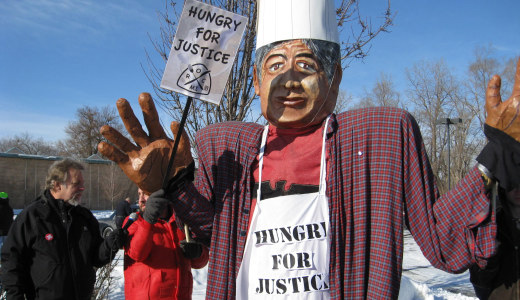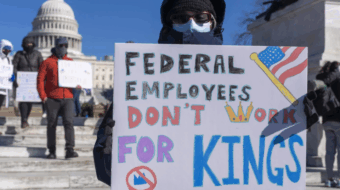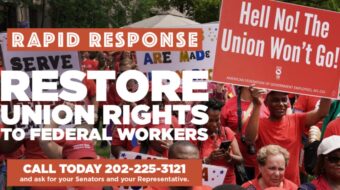
ORLANDO, Fla. – Recent reports showing union membership at an all-time low are of enormous concern at a gathering here of the nation’s labor leaders. The Bureau of Labor Statistics reported just over 11 percent of the workforce is unionized. Members of the AFL-CIO executive council say the BLS report is much more than just numbers. They see it tied to attacks on democratic rights.
“These figures must be seen as one part of an overall decline in democracy in our country,” said Larry Cohen, president of the Communications Workers of America, when he came out of a closed session of the council for a break this morning.
“The rights of workers to organize in this country are on par with Mexico and Colombia. When you try to organize, when you try to exercise that right guaranteed by law you are confronting the corporate world. Your job and livelihood are on the line,” he said.
“In politics, money has supplanted democracy and the right to vote. If you are an immigrant dreamer you have to go before a Senate that will kill the Dream Act. The lower numbers of union members are just one part of an entire attack on democracy.”
Union leaders are anything but content with the idea of letting such attacks stand.
“We are taking a new approach to organizing that involves reaching out to others not in the labor movement,” said Elizabeth Bunn, the AFL-CIO’s director of organizing.
“This is why labor is so strong on immigrant rights. No worker in this country can hope for justice on the job when you have 11 million immigrants who can be abused by having all their human rights taken away from them. Unless we have comprehensive immigration reform, we cannot have workers’ rights on the job.”
“Part of reversing the membership decline,” said Maria Elena Durazo, executive secretary-treasurer of the Los Angeles federation and chair of the AFL-CIO’s immigration committee, “is working with workers’ centers. They are not official unions but they bring in potentially millions of restaurant, domestic, car wash workers, workers in shipyards and elsewhere into a working alliance with the traditional labor movement. We must become a bigger and broader movement.”
Another approach talked about here is for community organizations, elected officials and local groups to be encouraged to organize workers themselves.
“This is what the United Auto Workers is doing in Mississippi,” said the union’s president, Bob King. “Community groups, religious leaders, workers themselves and others in the Canton, Miss., area formed a coalition that is leading the effort to unionize Nissan workers. They reached out to us, not the other way around, and we are working in alliance with them. We want to see more and more of this.”
Union leaders here say public awareness campaigns about the effects of attacks on public workers, for example, are still another part of their overall fight back and plan to reverse declining membership figures.
“When people understand,” said chief AFL-CIO economist Bill Spriggs, “that the attacks and the resultant cuts in union jobs mean longer lines at airports, less police protection on rough street corners in their neighborhood and larger class sizes in their schools, they will see that this is something that effects a lot more than just unions and their membership rolls.”
Photo: Restaurant workers in Dearborn, Mich., have forged an alliance with students, clergy, labor and the social justice community to win their rights on the job. (PW/John Rummel)










